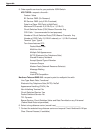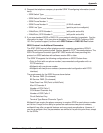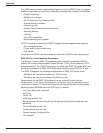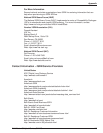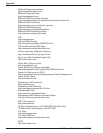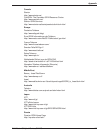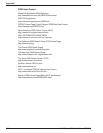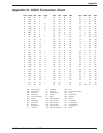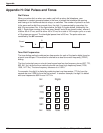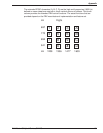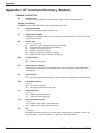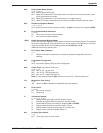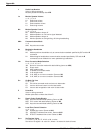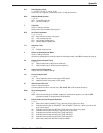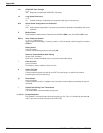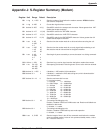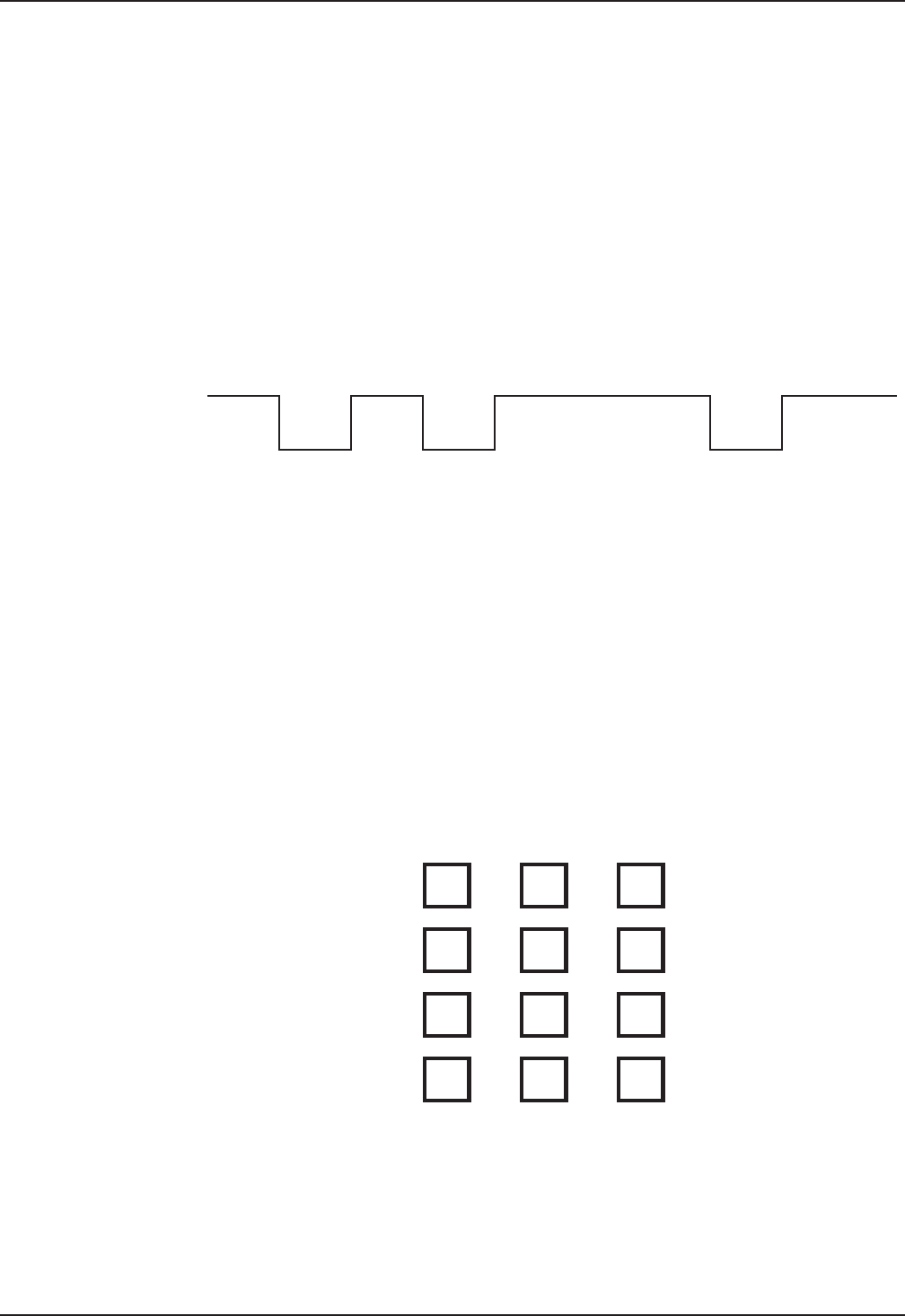
150 MultiModemISI Hybrid Series, ISIHI-2S
Appendix
Appendix H: Dial Pulses and Tones
Dial Pulses
When you pulse dial, as when you make a call with a rotary dial telephone, your
telephone or modem generates codes in the form of pulses that simulate the opening
and closing of old-fashioned electric relays, or switches. The number of pulses in a code
is the same as the digit they encode; thus, the digit
1
is represented by one pulse, the
digit
2
by two pulses, etc. In the figure below, the digit
2
is pulse dialed, followed by the
digit
1
. Each pulse consists of an A ms open (break) and a B ms closed (make), where A
is either 60 or 67 ms, and B is either 40 or 33 ms, for a total of 100 ms per cycle, or a rate
of 10 pulses per second. The interdigital pause time is 800 ms. The pulse ratios are
controlled by the &P command.
Closed
Open
B
A
Digit 2 Digit 1
Tone Dial Frequencies
The tone dialing method combines two frequencies for each of the twelve digits found on
a touch-tone dial pad. This method is referred to as dual-tone multi-frequency (DTMF)
dialing.
The four horizontal rows on a touch-tone keypad use four low-frequency tones (697, 770,
852, 941 Hz), while the three vertical columns use three high-frequency tones (1209,
1336, 1477 Hz). The tone frequency tolerance is ± 0.02%.
For example, the digit 4 is dialed by combining two tone frequencies: 770 Hz from the
second row, and 1209 Hz from the first column. In another example, the digit 9 is dialed
with tone frequencies 852 Hz and 1477 Hz.
Hz Digits
697
770
852
941
Hz 1209 1336 1477
1 2 3
4 5 6
7 8 9
0 #
*



